
EFL · National City (Italy)
Italy

Landmark construction: Colosseum
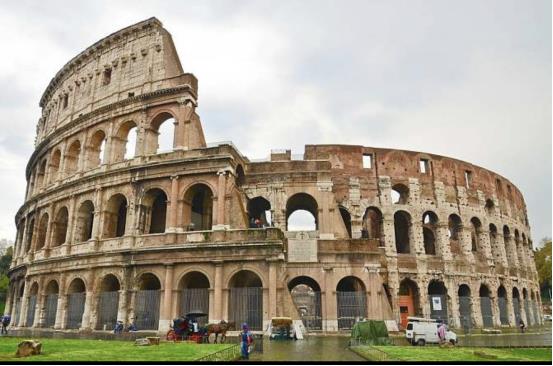
The Republic of Italy (Republic of Italy)
[Area] 301,300 square kilometers (2018).
[human mouth]. According to Xinhua News Agency, the latest statistics released by the Italian National Bureau of Statistics show that the population of Italy continues to increase. As of January 1 this year, the total population is 60.387 million. Compared with the statistics in 2001, the population increased by about 3.4 million in nine years, breaking the 60 million mark for the first time. It's mainly Italians. Italian is spoken, and French and German are spoken in individual border areas. The majority of the population is Catholic.
[Ethnicity] Italy's population is 94% Italian, with ethnic minorities such as French, Latin, Friuli, Germanic and Slavic.
[Language] The official language is Italian, with Valais da Aosta in the northwest and Trentino in the northeast
French, German and Slovenian are spoken in the minority areas of Alto Adige and Friuli-Venetian-Giulia. Italian English level is average, government departments and business people English level is good, the north of the English level is higher than the south.
[Religion] Over 70% of Italians believe in Catholicism, while the rest believe in Protestantism, Orthodox, Judaism, Islam, Jehovah's Witnesses and Buddhism.
[Capital] Rome, population 3 million
[Head of State] Sergio Mattarella, assumed the throne on 3 February 2015.
New Year's day: January 1; Epiphany: January 6; Easter: The first Sunday after the first full moon after the Vernal Equinox; Liberation Day: April 25; National Day: June 2; Assumption Day: August 15; Halloween: November 1; Victory Day: November 4; Christmas Day: December 25th.
Italy is located in southern Europe on the northern shore of the Mediterranean Sea, its territory includes the southern foothills of the Alps and the Po River Plain area, the Apennines Peninsula and Sicily, Sardinia and many other islands. The coastline is about 7,200 kilometers long. Most of Italy has a subtropical Mediterranean climate. According to the different terrain and geographical location of Italy, the country is divided into the following three climatic zones: the southern peninsula and island region, the Madan Plain region and the Alps. Each of the three regions has its own distinctive climate. The average temperature is 2-10℃ in January and 23-26℃ in July. The average temperature in the capital is 6.9° C in January and 18° C in August.
To establish a parliamentary republic. The President is the head of state and commander-in-chief of the armed forces, who represents the unity of the country and is elected by a joint session of the House of Representatives and the Senate. The prime minister, who is appointed by the president and responsible to the parliament, is responsible for the administration of the country. The current government was formed in February 2021 and is the 67th post-war government of Prime Minister Mario Draghi.
【 Constitution 】 The present Constitution (Costituzione) was adopted by the Constituent Assembly on December 22, 1947. It was promulgated on January 1, 1948. On October 7, 2001, the revised constitution was approved in a referendum. The constitution states that Italy is a democratic republic based on Labour. The President, who represents the country externally, is elected by a joint session of the House and Senate.
The Parliament is the highest legislative and supervisory body, consisting of the Senate and the House of Representatives. Both houses have equal powers and each can pass resolutions, but their resolutions are related to each other. 2. With the exception of a few life senators, the Senate and House of Representatives are elected by popular vote to five-year terms. The Senate has a total of 315 members, with a small number of life senators; There are 630 members in the House of Representatives. The main functions of the parliament are: enacting and amending the constitution and laws, electing the president, deliberating and passing bills of confidence or non-confidence in the government, supervising the work of the government, discussing and approving the national budget and final accounts, having the power to impeach the president, prime minister and ministers, deciding on the state of war and delegating necessary political decisions to the government, etc. Both Houses meet in joint session on special occasions such as the presidential election and the oath of office. This parliament, the 18th since the end of the war, was elected in March 2018. Speaker of the Senate Alberti Caserardi (Forza Forza), Speaker of the Chamber Roberto Fico (Five Star Movement).
The 59,634 members of Italy's anti-establishment Five Star Movement voted online Wednesday, with 79.3% supporting the party's alliance with the Democratic Party, paving the way for a two-party coalition and the swearing-in of a new government. The cabinet of the new government is composed of 23 members, including one Prime Minister, one State Secretary and 21 Cabinet Ministers. Eleven from the Five Star Movement, nine from the Democratic Party, one from the Freedom and Equality Party, one technocrat,
7 females.
[Administrative Districts] Italy is divided into 20 first-level administrative regions -- Regione, 110 provinces and 8,092 cities (towns). Five of the 20 regions are autonomous regions with special laws: Valleda Aosta, Trentino-Alto Adige, Friuli-Venezia Giulia, Sicily and Sardinia.
The Supreme Judicial Committee (SPC) is the highest judicial authority. It has the power of independent judicial system and appointing judges, as well as the power of appointing, assigning, dispatching, promoting and prescriptive measures of judges. It consists of 33 members, with the President as President and the President of the Supreme Court and the Attorney General as ex officio members. The other members are made up of 10 commissioners (lawyers and professors of justice) elected by Parliament and 20 judges elected by the full bench, serving four-year terms with non-renewable and part-time terms. The Constitutional Court, which inspects and supervises the constitutionality of laws, is composed of 15 judges who serve nine-year terms, are not allowed to serve part-time and enjoy immunity. Lena Glanatta, president of the Constitutional Court, and VittorioSgroi, president of the Supreme Court. In addition, there are, in this order, local conciliatory judges, courts of first instance (for minor offences), courts of first instance (for civil and criminal cases), courts of appeal, courts of audit (for public accounts and pensions), etc. [8]
[Economy] As a developed industrial country, Italy is the fourth largest economy in Europe and the eighth largest economy in the world. GDP in 2019 was 1.79 trillion euros, with per capita GDP exceeding 28,000 euros. Mechanical equipment, automotive manufacturing, biomedicine, aerospace and aviation, etc., is a world leader. Abundant tourism resources and historical and cultural heritage, fashion design, Mediterranean cuisine is well known. But the regional economic development is not balanced, the north is developed in industry and commerce, and the south is relatively backward in economy, which is mainly based on agriculture. Small and medium-sized enterprises developed, known as the "kingdom of small and medium-sized enterprises", the number of small and medium-sized enterprises accounted for more than 98% of the total number of enterprises. Regional economic development is not balanced, the north industry and commerce developed, the south is mainly agriculture, the economy is relatively backward. According to the data of the Italian Statistical Bureau, in 2019, Italy's annual GDP is about $2 trillion. Italy's economic growth is weak, and the gap between Italy and the other three major European economies is growing. Its total GDP was surpassed by Brazil, which ranked only ninth in the world. Italy's real GDP growth in 2019 was just 0.3%, down 5 percentage points from 2018 and the lowest among the four major European economies. Influenced by the epidemic, GDP growth in 2020 will decline sharply. Italy's GDP will drop by 5.4% in the first quarter of 2020 and 17.3% in the second quarter. The European Commission estimates that Italy's GDP will drop by 11.2% in 2020. In May 2020, the Italian government promulgated the "Recovery Act" with a fund scale of 55 billion euros, aiming to help individuals, families and enterprises in distress affected by the epidemic, and to support and guide the rapid recovery of the economy.
Italian economic growth from 2015 to 2019

Major economic indicators for 2019 are as follows:
Gross Domestic Product (GDP) : €1,787 trillion
GDP per capita: 28,500 euros
GDP growth rate: 0.3 percent
Total exports growth year-on-year: 1.2%
Total imports decreased by 0.4% year-on-year
Deficit to GDP ratio: 1.6%
Unemployment rate: 9.5 percent
(Source: Italian National Statistics Agency)
[Resources] The main natural resources are poor, only water, geothermal, natural gas and other energy and marble, clay, mercury and a small amount of lead, aluminum, zinc and bauxite and other mineral resources. The country produces only 4.5 percent of the oil and gas and 22 percent of the domestic market, and is dependent on imports for energy and major industrial raw materials.
[Industry] With a developed real economy, China is the second largest manufacturing power in the EU, second only to Germany. All kinds of consumer goods and investment products with medium technology content occupy a considerable share in the world market, but high-tech products are relatively few. The main industries are: petrochemical, automobile manufacturing, household appliances, electronic instruments, metallurgy, machinery, equipment, textile, clothing, leather, furniture, food, beverage, tobacco, paper making, publishing, printing, construction and so on. With a high degree of specialization and strong adaptability, SMEs have traditionally been export-oriented and have strong international competitiveness in tanning, footwear, clothing, textiles, furniture, kitchen and bathroom, ceramic tiles, silk, jewelry, wine making, machinery, marble mining and machinery industries.
Agriculture, forestry and fishery accounted for 2.4 percent of the GDP. About 56 percent of China's land is agricultural, and there are about 1.6 million agricultural enterprises in China. China is a traditional agricultural country and strong agricultural country in the world. The quality of agricultural products such as olive oil, wine and tomato sauce enjoys worldwide reputation. Total agricultural output in 2019 is 56.5 billion euros, ranking third in Europe. It is the country with the most certification of "protection of origin", "protection of geographical indications" and "protection of traditional characteristic products" in the EU.
Italy is the second largest agricultural country in the EU, second only to France. The quality of its agricultural products enjoys a worldwide reputation. 239 kinds of agricultural products in Italy have obtained the highest certification of the EU, which is the largest number among EU countries. In 2010, Italy overtook France to become the world's largest wine producer, with exports mainly to Germany, the US and the UK.
[Foreign Trade] Foreign trade is an important pillar of Italy's economy. Italy's export products are highly competitive in the international market. Italy's export products are complete in variety, mainly including mechanical and electrical equipment, automobiles, medicines, plastics, furniture, clothing, leather and other industrial products. The export market is mainly European Union countries, accounting for more than 50% of the total export. The main source of imports is the European Union, accounting for 59%. Germany, France and China are the top three sources of imports for Italy. Foreign trade is the mainstay of Italy's economy. The output value of foreign trade accounts for over 40% of the GDP. Personal consumer goods, mechanical equipment and services occupy a very important position in the international market. According to the data of the Italian National Bureau of Statistics, Italy's total trade in goods in 2019 was 898.774 billion euros; That's up 1.9 percent year on year. Among them, the total export value was 475.857 billion euros, up 2.3% year on year, while the total import value was 422.917 billion euros, down 0.7% year on year. The trade surplus was 52.94 billion euros.
Italy's main export market in October 2020

Source: Italy's National Statistics Agency
November 2020 Italy's main source of imports

Source: Italy's National Statistics Agency
[Major Trading Partners] The markets outside Italy are mainly European Union countries, accounting for more than 50% of the total exports. In recent years, Italy's export share to the rest of the world market has gradually increased, and Russia, Japan, China, Brazil, the United States, Vietnam, North Africa, the Middle East, South Africa and other countries and regions are all important trade partners of Italy in non-EU countries. Italy's main exporters are Germany, France, the United States, the United Kingdom, Spain and Switzerland; The main importers are Germany, France, China, the Netherlands and Spain.
[Commodity Structure] Main export commodities: machinery and equipment, automobiles, electronic equipment, clothing and textile, leather and products, metals and products, pharmaceuticals and chemicals, agricultural products; Import commodities: energy and minerals, metals and products, transportation equipment, machinery and equipment, electronic products, chemicals, textile and clothing, food and beverage.
[Trade in Services] According to WTO data, Italy's total trade in services in 2018 was US $243.661 billion, of which exports were US $120.811 billion and imports were US $122.85 billion. In the export products, transportation services accounted for 13.3%, tourism services 40.1%, other commercial services 40.9% and goods related services 5.7%. In imported products, transportation services accounted for 21.9 percent, tourism services 24.3 percent, other commercial services 50.1 percent and goods related services 3.6 percent.
The main destinations of Italy's service trade are the European Union, the United States, Switzerland, Canada and China, while the main destinations of Italy's service trade are the European Union, the U.S., Switzerland, China and Russia.
Italy is an important economic and trade partner of China in the EU. Bilateral economic and trade relations have been developing smoothly since the two countries established diplomatic ties in November 1970. Italy is China's fourth largest trading partner in the EU, while China is Italy's largest trading partner in Asia. According to Chinese customs statistics, the bilateral trade volume between China and Italy in 2019 was US $54.91 billion, up 1.2% year on year. China's exports to Italy amounted to US $33.5 billion, up 1% year on year. Imports from Italy reached 21.41 billion US dollars, up 1.7% year on year.
China's main exports to Italy are: electrical and electronic equipment, mechanical equipment, clothing, steel and its products, furniture, organic chemicals, vehicle parts, plastics and its products, optical medical equipment, leather products and bags. At present, Italy is China's fourth largest trading partner in the EU, and China is Italy's largest trading partner in Asia. In 2020, bilateral trade was 55.185 billion US dollars, up 0.4% year on year. China's exports to Italy were US $32.938 billion, down 1.7% year on year, while imports were US $22.248 billion, up 3.8% year on year. My main exports to Italy are: clothing and clothing accessories, textile yarn, fabric and products, shoes, tourist articles and bags, cashmere, toys, automatic data processing equipment and its parts, plastic products, medical products, etc. China's main imports are from Italy, textile machinery, animal leather, TV picture tube, metal processing machine tools, rubber or plastic processing machinery, pharmaceuticals, tobacco machinery, mould and metal casting molding box, TV, radio and radio communications equipment of zero detection control instruments and accessories, measuring instruments, etc.
China-Italy imports and exports from 2015 to 2019
(Unit: $100 million)
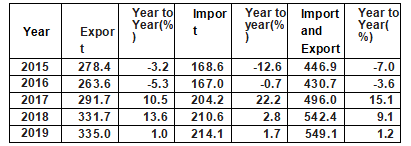
[Famous Companies] The situation of Italian large companies is as follows:
Leonardo S.P.A, formerly known as Gruppo Finmeccanica, is Italy's largest military and high-tech group company. The company's total output value accounts for about 70% of the total output value of Italy's defense industry, and the state holds 32.4% of its shares. It covers the fields of aviation, aerospace, energy, electronic defense, transportation and information technology. The Group designs and manufactures aircraft, helicopters, satellites, missile systems, radar, trains and generator sets. Website: www.leonardocompany.com.
Gruppo Generali (Gruppo Generali) was founded in 1831. Europe's fourth largest insurance group, one of the world's top ten insurance groups. Generali Group operates in more than 50 countries. In 2002, Generali Insurance Co., Ltd. and China National Petroleum Corporation jointly established Sino-Italian Life Insurance Co., Ltd., with a registered capital of RMB 1.9 billion, becoming the first Sino-foreign joint-venture insurance company approved after China's accession to the WTO. Website: www.generali.com.
Fiat Chrysler Automobiles (FIATCA) is the world's first manufacturer of miniature cars. It was founded by Giovanni Agnelli and 29 other shareholders in 1899, and its headquarters is located in Turin. In 1996, Nanjing Automobile Group of China and Iveco of Fiat Group jointly established Nanjing Iveco Automobile Co., Ltd., which became the largest cooperation project between the Chinese and Italian governments at that time. In March 2010, Fiat and GAC Group jointly formed GAC Fiat. In January 2014, Fiat completed its full acquisition of Chrysler Group, which was renamed FCA after the merger. With more than 230,000 employees and operations in more than 140 countries, Fiat Chrysler is the seventh largest automaker in the world. Website: www.fcagroup.com.
Pirelli S.P.A., founded in 1872, mainly produces rubber tires, cables and communication equipment. Headquartered in Milan, the company currently has 24 subsidiaries around the world with approximately 26,000 employees and stable production bases in 14 countries including Argentina, Brazil, Egypt, Turkey, Germany and Venezuela. The business structure covers major markets in more than 160 countries around the world and has approximately 10,000 distributors and retailers. In 2005, pirelli entered China, choose to build a factory in shandong. At the end of 2007, pirelli established the second tire production line in China in shandong - meridian car tire production line, officially put into production of high-performance car tires. In 2015, China National Chemical Corporation acquired 26.2% of Italian Pirelli for 7.1 billion euros. Website: www.Pirelli.it.
Telecom Italia S.P.A, formerly known as Gruppo Telecom Italia, has a history of over 100 years and is headquartered in Milan. Forty percent of the shares are held by Italian governments. The company operates in nine countries, including Italy and Brazil, and has nearly 100 million customers. Website: www.Telecomitalia.it.
Ente Nazionale Idorcarburi (ENI), also known as the "National Carbide Corporation", has its headquarters in Milan. It was formed on February 10, 1953 by the amalgamation of state-controlled oil, gas and petrochemical enterprises. The business scope includes: crude oil, natural gas, chemicals and petrochemical products, nuclear fuel, coal, machinery and equipment, textile raw materials and clothing, mining and metallurgy, and contract construction and trade. It has business contacts in about 70 countries and employs more than 72,000 people. In 2013, CNPC paid $4.2 billion for a 28.57% stake in Eni East Africa. Website: www.eni.it.
Enel, founded in 1962, is 68% owned by the state. Listed in Milan and New York in 1999, Enel is Italy's largest electricity company and the second largest natural gas transmission company. The power sector has tens of millions of customers. Website: www.Enel.it.
Fincantieri Group, formerly the Italian Shipbuilding Finance Group, was founded in 1959 as a state holding company and became a self-owned company in 1984. Fincantieri Group is one of the world's largest and most diversified shipbuilding companies. It is mainly engaged in the construction of military ships, large private ships, offshore drilling platforms and special ships, and the construction and maintenance of luxury cruise ships. It has built more than 7,000 ships of various types. Headquartered in Trieste, the main design center is located in Trieste, Genoa. Website: www.fincantieri.com.
Top 500 Italian Companies in the World (2020)
(Unit: millions of US dollars)
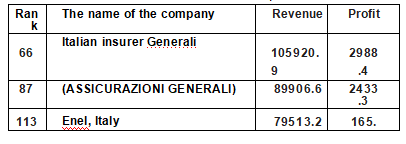

Literature and Art
In the Western Italian literature, religious literature occupies an important position. Religious literature began as biographies, prayers, religious stories, and hymns sung during religious ceremonies written in Latin. The subsequent rise of religious heresy is reflected in religious literature. . The main representative is the valley of San Fonlo (1182 ~ 1226) and Jacopone da Tordi (c. 1230 ~ 1306). Folklore also developed during the Middle Ages, but only a small part of it survived, the most famous of which was the Sicilian song dealer Chuolo de Alcamo's Fragrant and Fresh Roses in the second half of the 13th century.
The earliest literary poetry in Italy, from the Sicilian school of poetry in the first half of the 13th century. It, together with the Tuscan Poetry School (mainly represented by Guitone D 'Aletto, c. 1235 ~ 1294, Berdini) and the gentle New Style Poetry School (mainly represented by Guido Cavalcanti, c. 1255 ~ 1300), which appeared in the urban commune, eulogified love and expressed the citizens' interest in the vulgar life, reaching the peak of medieval lyric poetry.
Medieval literary narrative essays, ecclesiastical works, and townsfolk tales popular in medieval urban literature. Brunetto Latini's Treasure-House (c. 1220 ~ 1294) and Marco Polo's travels have had a profound influence.
The dawn of the European Renaissance first appeared in Italy. The first representative is Dante. With his representative work Divine Comedy, he became a great poet in the history of Italian and European literature. The other two pioneers of the Renaissance, Petrarch and Boccaccio, set the precedent of modern European lyric poetry and short stories with their Songbook and Decameron respectively.
From the second half of the 14th century to the middle of the 15th century, the most important poet was Poliziano (1454 ~ 1494), whose poems reflected the humanist yearning for an idyllic world. Purci (1432 ~ 1484) and Boardo (1441 ~ 1494) were recorded in the annals of Italian literature with their epic romances of chivalry, Molganti and Roland in Love.
The representatives of the late Renaissance were Ariosto (1474 ~ 1533), Machiavelli (1469 ~ 1527), and Tasso (1544 ~ 1595). Ariosto's "Crazy Roland", followed by Boardau's "Loving Roland", paved the way for the development of European narrative poetry. The comic works of Machiavelli, Ariosto and Aredino (1492 ~ 1556) laid the foundation for the development of the later Italian comedy. Tasso's long narrative poem "Jerusalem Unchained" shines in the last light of the Renaissance.
In the 17th century, Italy lost its important position in European economy and culture due to the invasion of foreign nations and political turmoil. Literature is on the decline. With Marino (1569 ~ 1625) as the representative of the formalist literature, the Marino School of Poetry and the Acadian School of Poetry emerged.
Renaissance Works In the second half of the 18th century, Italy achieved relative stability. Natural science, materialist philosophy and enlightenment thoughts were widely disseminated. There is Enlightenment literature. The most accomplished Enlightenment writer, Giorgio Goldoni (1707 ~ 1793), innovated the long-popular "masked comedy" and created the "custom comedy", which embodied distinct democratic ideas and laid the foundation for the development of Italian realistic drama.
The national revival movement for national independence, unity and freedom arose vigorously in the 19th century. Romantic literature was the reflection of this movement in the cultural field. A number of excellent writers and poets, such as Berger, Balta, Manzoni and Leopardi, were introduced. It expresses the Italian people's ardent desire to safeguard national dignity and revive the motherland.
The national revival ended in 1870 with the establishment of a constitutional monarchy of the Kingdom of Italy. Italy was caught between a new capitalist order and an old feudal relationship. Realism literature is the product of this particular social and historical condition. The group of realism writers, led by Capuana and Verga, cast their eyes on the areas with the most acute social contradictions at that time, profoundly revealing the collapse of the traditional social order and the misery of the common people under the impact of powerful capitalism.
At the end of the 19th century, children's literature also achieved fruitful results. Collody's (1826 ~ 1890) The Adventuresof Pinocchio, De Amicis's Education of Love, had a wide range of influences.
In the first 30 years of the 20th century, Italy joined the ranks of imperialism and established the world's first fascist dictatorship. Its literature presents a complicated and different situation. Futurism is a group of radical artists under the banner of revolutionizing traditional literature. They rival the aestheticism of D 'Annunzio (1863 ~ 1938) and adopted free and uninhibited means of expression, resorting to reaction and rapid rhythm, to show the beauty of movement and power, and to show the impulse of human consciousness, which had an impact on European and American modernist literature and art. The secret school poetry sprouted in the 1920s, and its radiation power spread to more than half a century of important poetry schools. The obscure poets represented by Montalet, Ongaretti (1888 ~ 1970) and Quazimodo are good at depicting the subtle emotions and transient feelings of people's inner world, and express the consciousness of maintaining individual dignity and value under the pressure of "the evil of life" of a generation. Pirandello and Svevo (1861-1928) are the 20th century drama and novel of the field of unique masters. The former breaks the standard of traditional drama, describes the absurd events in the absurd environment and depicts the tragedy of people losing themselves, while the latter abandons the technique of traditional novels and shapes the image of morbid modern people with the help of the subconscious. New realism, with the passion and ideals of the anti-fascist resistance, provides Italian literature with a new, unpretended view of the struggle, the "southern problem" and the everyday lives of little men in the early postwar years. Many post-war writers such as Levi (1902 ~ 1975) Platolini (1913 ~ 1991) and other achievements, are connected with the new realism.
After the Second World War, a number of outstanding writers all had their own artistic style. Vidolini (1908 ~ 1966) combined realism with abstract ideas to reveal the essence of reality from the perspective of morality. Calvino devoted his life to the innovation of art forms and pondered the alienation of modern people. With acute vision and skilled skills, Moravia depicts the spiritual crisis of the contemporary bourgeoisie. Xia Xia's novels are characterized by describing social and political issues and exposing the crimes of the Mafia.
What's hot in the news
(1) Assolatte, the Italian cheese association, appeared at the 2020 FHC Shanghai World Food Fair
www.shanghaifood.cn/MobileShowNews/Newsdetail/15341
(2) Italian fashion brand Pinko was recognized as the regional (Asia Pacific) headquarters enterprise by Shanghai
www.cet.com.cn/xwsd/2714571.shtml
(3) China Council for the Promotion of International Trade (CCPIT) and Italian Foreign Trade Commission signed the cooperation agreement
http://www.cnki.com.cn/Article/CJFDTotal-GJGL201811017.htm
(4) Analysis of food safety supervision system in Italy
https://www.sohu.com/a/284420652_120056211
- Country · Human Geography
The Italian Republic, Italy for short, with Rome as its capital. Italy is located between 36° 28’N ~ 47° 6’N, 6° 38’E ~ 18° 31’E, on the northern shore of the Mediterranean Sea in southern Europe. It is a European country. Its territory includes the southern foothills of the Alps and the Po Plain, the Apennines Peninsula, Sicily, Sardinia and many other islands. The Apennines Peninsula accounts for 80% of its total territory and is surrounded by two micro-states, San Marino and the Vatican. Due to mountainous terrain and lack of fertile soil, Italy's agricultural arable land accounts for only 10% of the country's total area. Agricultural exports mainly consist of wine, olive oil, flour and flour processed from hard wheat, and processed vegetable and meat products. Italy is the world's biggest exporter of olive oil and second only to France in wine exports. Italy is a powerful country in sports, carrying out a wide range of sports, is a romantic country in sports. In addition, the Tour of Italy is held here every year, attracting many top riders from all over the world. Italy is known as "one of the football kingdoms of the world", Italy has won the World Cup four times. The traditional shirt of the national team is blue shirt, white trousers and blue socks. Its nickname is Azzurri (blue, Italian), and its Chinese nickname is "The Blue Legion".
Italy! Food, human plastic art and modern science and technology civilization of the perfect combination of Italian cars, furniture and so on are full of artistic quality. It can be said that in Italy, rich artistic performance has been incisively and vividly.
The Italians are hospitable and polite, and dress very well on formal occasions. Put women first in all social situations. A greeting is to shake hands or wave; Kissing is a ritual between close friends, usually two people should kiss each other's face twice. Kissing is also practiced in Italy between two male best friends.
For elders, people of high status and those who are not familiar with them, address them by their surnames and add "Mr.", "Mrs." or "Lawyer".
When friends gather in restaurants to eat more, generally implement the AA system, unless the other party declared to treat. Italians, such as invite guests to dinner at home, show that the guests as guests, guests can bring wine (generally wine), dessert or flowers. Food, wine and dessert brought by guests will be served on the spot. Italians are used to opening gifts on the spot to show their respect for guests.
Italians avoid a cross handshake, the number "13" and the gift of chrysanthemums.
Picking your nose or ears with your fingers in front of people is a social taboo in Europe. Don't talk loudly in public.
(1) A city full of art
https://v.qq.com/x/page/a0554fjea6j.html
(2) The customs and customs of Italy
https://v.qq.com/x/page/l09300na7gp.html?fromvsogou=1
(3) Italian traditional folk fish festival - Tencent video
https://v.qq.com/x/page/i0875h7x4j6.html?fromvsogou=1
(4) Italian Milan City Street Scenery - iQIYI video
https://www.iqiyi.com/w_19rtd0q8fp.html?fromvsogou=1&fv=bf562ffc1cd15119
- Frame section: the latest information
(1) Food safety system in Italy
https://www.doc88.com/p-2798218528467.html
(2) Construction of food safety supervision system in Italy
www.cnki.com.cn/Article/CJFDTOTAL-SJBZ201812014.htm
The Italian food delegation will attend the Harbin International Food Festival
https://new.qq.com/rain/a/20210528A0406S00
The Chinese businessman was fined 438,000 euros
https://www.163.com/news/article/DQES8H4E0001875O.html
(5) Italian food etiquette
https://wenku.baidu.com/view/ad6e98e6094c2e3f5727a5e9856a561253d32110
(6) 350 entrepreneurs participated in China-Italy Agricultural and Food Economic and Trade Cooperation Forum Guangming took the opportunity to expand the Italian market
www.ceweekly.cn/2015/0611/114601.shtml
(7) Italy launched a food safety inspection
https://wiki.antpedia.com/16/article-394016
(8) Supervision of food safety in Italy
https://www.iopfun.cn/italy/langnewsdetails/7533
(9) Italy: The strictest regulatory rules guarantee a bite of safety
www.chinameat.org/index.php?a=detail&id=1344
(10) Italy International Packaging and Food Processing Exhibition in 2021
https://www.1633.com/act/offline/1599
- Frame section: introduction of country and food
The food industry plays an important role in Italian manufacturing. Among them, wine is the national symbol of Italy, accounting for about 20% of the exports of the whole Italian food industry. Other specialty agricultural foods include pasta, olive oil, dairy products such as cheese, dessert pastries and meat products (especially pork products).
- Frame section: food standards
(1) Italian food safety system
https://www.docin.com/p-117624797.html
(2) Analysis of food safety supervision system in Italy
www.cnki.com.cn/Article/CJFDTotal-SJBZ201812014.htm
(3) Italian regulations on the safety of contact materials with food
www.glotest.com/test-standard/uni/l
(4) Italian food safety standards
https://www.bbaqw.com/anquan/1384355/
(5) Inspection of import and export commodities
law.foodmate.net/show-58812.html
- Framework: Policies and regulations [State Administration for Market Regulation]
7.1 What are the regulations and policies on foreign trade?
7.1.1 Trade authorities
In 2019, after the establishment of the new coalition government formed by Italy's Five Star Movement and the Democratic Party of Italy, major adjustments were made to the government functions. From January 2020, all the foreign trade functions originally belonging to the Ministry of Economic Development were transferred to the Ministry of Foreign Affairs and International Cooperation. It includes strategic planning, trade promotion, financial support, commercial promotion, trade remedies, import and export licensing of agricultural products and endangered species, market access, and approval of dual-use products. The Italian Foreign Trade Commission, a trade promotion agency, also comes under the jurisdiction of the Foreign Ministry. The Division for Market, Competition, Consumer Protection and Technical Regulation of the Ministry of Economic Development remains responsible for market competition, product and service quality standards and conformity assessment.
7.1.2 Trade legal system
As a member of the EU, Italy implements the common trade policy of the EU, but the technical safety, health and quarantine standards of imported goods are translated from EU directives into national laws and regulations before implementation. Italian trade laws and regulations come from a wide range of sources, including EU laws and regulations and EU directives
(need to be converted into domestic law), the legislative, the executive order, economic development possible, inform, guide, and multilateral agreements, etc., covering industry trade order management, product quality and safety standards, export credit and export insurance plan, product packaging and labelling, dual-use technologies and products import and export, market competition and the protection of intellectual property rights, etc.
7.1.3 Relevant provisions on trade management
The EU Common Trade Policy implemented by Italy at present mainly involves tariff policy, GSP treatment, common import system, agricultural product import quota management, trade remedy measures, export control, export rebate, common agriculture and fishery policy, common consumer protection policy and so on.
【 Import Management 】 The import management of Italy includes two aspects: quantity restriction such as quota and import license management. Restrictions on agricultural imports are implemented in accordance with the European Union's Common Agricultural Policy. GMFs approved for import and sale must be systematically marked on their packaging. The import of goods containing animal products shall show the certificate of the competent authority of the country of origin, and the import of aquatic products shall show the fishing license.
[Export Management] The Italian government implements the policy of encouraging export, and general commodities can be exported freely. The government only controls the export of a few products, such as endangered animals and plants and dual-use products.
(1) Subsidies for agricultural products. Italy supports agriculture under the European Union's Common Agricultural Policy. The main means of subsidy are direct and indirect. Direct subsidy means have price subsidy, planting area subsidy, yield subsidy, etc. In addition, Italian companies can also enjoy agricultural and sideline products when they export to third countries
Subject to the export tax rebate policy, the specific tax rebate rate is formulated by the European Commission according to the agricultural development strategy and product category, and adjusted timely according to the situation. The tax rebate fund is from the EU agricultural subsidy fund, and the tax rebate method includes direct tax rebate, advance tax rebate and advance fund support.
(2) Export tax rebate policy. Italy for the production enterprises to export goods to take the way of exemption, arrival, return. The production of export goods by enterprises shall be exempted from value-added tax in the link of production and export. The input tax on materials and other goods used in the production of export goods shall be set off against the VAT payable by enterprises, and shall be settled on an annual basis. The input tax not fully deducted from the previous year may be carried forward to the next year for further deduction. To do not want to carry forward next year to offset, the enterprise that is in urgent need of funds can also apply for a tax refund. The export goods of traders are also generally exempted, offset and refunded, but the export sales volume should reach more than 10% of the total sales volume. The essence of this method is to offset the tax payable on the export goods of the previous year against the tax payable on the import goods of the next year or the input tax on the imported goods of the country. If the quota of the current year is not fully used up, it may be carried forward for further use in the next year; To individual don't want to carry forward to the top of the import and export business for the next year, but should apply for the corresponding tax rebate, export sales amounts have not reached 10% of the total sales are not allowed to use this way, the input tax of the export goods contains can directly apply for a refund or with enterprise value-added tax or other tax payable tax amount payable.
(3) Military exports. Italy is a member of the original Paris Coordinating Committee and the current Wassenaar Arrangement, which exercises strict control over the export of conventional weapons and sensitive dual-use products and technologies in accordance with the control list of the Wassenaar Arrangement.
[Trade Remedies] Italy's trade remedies include anti-dumping, countervailing and safeguard measures, all of which comply with the relevant provisions of the European Union. The EU's 1036/2016 Anti-dumping Regulation and 1037/2016 Anti-subsidy Regulation have been incorporated into the international negotiation rules under the WTO framework. Regulation 2321/2017, which came into force in 2017, introduced a new method for calculating dumping, allowing the EU to assess dumping in the case of market distortions in third countries. The Regulations of 825/2018 also made partial revisions to the above-mentioned two regulations of 2016. The 478/2015 Regulation and the 755/2015 Regulation incorporate the general safeguard provisions stipulated by the WTO within the framework of EU law.
7.1.4 Inspection and quarantine of import and export commodities
[Inspection and Quarantine Administration Department] In Italy, there are many inspection and quarantine departments for commodities, with a relatively detailed division of labor. In particular, there are a large number of inspection and quarantine institutions for animal-derived products and live animals. The inspection and quarantine procedures for agricultural products imported from non-EU countries are cumbersome and the conditions are harsh. The Ministry of Health of Italy is responsible for the coordination and management of the overall work of inspection and quarantine, with agencies located in various regions and ports mainly responsible for law enforcement, as well as professional testing laboratories located throughout the country. The details are as follows:
(1) The sanitary inspection and quarantine of imported botanical products (including food products and products for other purposes) shall be carried out by the inspection and quarantine offices at ports, airports and land borders of Italy;
(2) Pesticide residues (such as pesticide residues) shall be tested by Italian Ports, Airports and Land Border Inspection and Quarantine (USMA) sampling and sent to a specialized pesticide testing center affiliated to the Ministry of Agriculture of Italy for analysis;
(3) Health inspection and quarantine of products of animal origin (including products for food and other purposes) and live animals imported from the EU Member States shall be carried out by the European Office of Veterinary Health and Quarantine (UVAC) located in the EU Member States and independent of the Ministry of Health of Italy;
(4) Health inspection and quarantine of products of animal origin (including food products and products for other purposes) and live animals imported from non-EU countries shall be carried out by the Veterinary Health and Quarantine Service (P.I.F) located at various ports under the Italian Ministry of Health. Italy has 36 P.I.F. agencies at ports, airports and land ports.
(5) The above departments not only have their own clear responsibilities and tasks, but also have business coordination and contact with each other, especially with the Italian Customs.
[Inspection and Quarantine Procedure] includes:
(1) The importer must provide the inspection and quarantine report of the goods issued by the exporting country in accordance with the regulations. The inspection and quarantine office of the Italian port, airport and land border will carry out a random inspection of one or more indicators according to the inspection report provided;
(2) According to different goods and countries of origin, the general sampling rate should not be less than 5% (batch sampling inspection), and the general provisions of inspection and quarantine work should be completed within one week;
(3) For batches of samples suspected to exceed the prescribed range of one or several indicators, the sampling detection rate of the same batch of samples shall not be less than 3%;
(4) For specific goods from specific countries, the sampling detection rate of aflatoxin can reach 5% or even 100%;
(5) In some cases, the Ministry of Health of Italy has issued temporary ministerial orders to carry out key tests on some commodities and to take measures to restrict customs clearance;
(6) For the commodities that have been tested by USMA and confirmed to be in compliance with the relevant inspection and quarantine regulations,
USMA issues the import license certificate for the importer, and the customs will release the goods according to the above documents.
(7) For goods that are tested by USMA and are confirmed to be inconsistent with the relevant inspection and quarantine regulations, USMA will make suggestions on the disposal of the goods and return them or destroy them.
7.1.5 Customs management rules and regulations
Italy is a member state of the European Union. The customs administration of Italy follows the uniform rules set out in the EU Customs Code (European Parliament and European Commission Regulation No. 952/2013) adopted by the EU on 9 October 2013, as well as other EU-level regulations, including the rules on tariff, tax rate, export rebate and the regulation of import and export goods. In order to further simplify customs procedures and formalities, increase transparency and improve work efficiency, the Italian government in 1999 on July 3, no. 300 issued by the law, the original Treasury management separate customs clearance department and indirect taxation department, and in 2001 formally established on January 1, independent of the General Administration of Customs, unity is responsible for the management of national customs, It has jurisdiction over 14 regional customs offices, 102 first-level customs offices and 47 second-level customs offices, 225 branches, 41 excise tax collection offices and 15 chemical analysis laboratories.
In addition to the EU Customs Code and other relevant EU regulations, the Italian General Administration of Customs also
A series of specific operational regulations have been formulated, including tariff and domestic tax collection procedures, application and procedures for export tax rebates (including agricultural export subsidies under the EU Common Agricultural Policy), import and export management of fresh agricultural products, quality and safety of imported and exported products, intellectual property protection measures and customs clearance procedures.
[Supervision System] The Italian Customs is responsible for the supervision of goods imported from Italy, mainly including checking goods, verifying documents, checking accounts of enterprises, checking means of transport, personal belongings, etc., conducting administrative investigations according to customs regulations, or taking measures against goods under supervision if necessary. Persons directly or indirectly involved in the proceedings of the trade shall provide the required documents and the necessary assistance within the time specified by the Customs authorities. All documents should be kept for at least 3 years to be ready for inspection by the customs authorities.
The goods are awaiting the customs clearance period and are under the temporary supervision of the customs, which is called "temporary supervision goods". They can only be deposited under specified conditions at a place designated by the Customs. The customs authorities may at any time request the unloading or dismantling of the packing for inspection of the cargo or means of transport. Not to be moved without Customs permission. The customs authority may require the owner of the goods to issue a guarantee of payment. If customs clearance is not completed within the specified time, the customs authorities will take the necessary measures, depending on the circumstances of the goods, including an auction or, at the expense and risk of the owner of the goods, transfer the goods to a special place under their supervision. In addition, the customs authorities also have supervisory and administrative functions over goods such as entrepot, bonded warehouse, inbound processing and temporary import.
[Tariff System] In accordance with the Uniform Tariff Rules of the European Union, the Italian Customs calculates the duties on the import and export goods according to the transaction price according to the customs duties, quotas, preferential measures and other import and export rules.
To facilitate the collection of customs duties, the customs authorities may require the importer or exporter to provide a guarantee of compliance with their customs obligations. The amount guaranteed may be equal to or greater than the tax payable. The guarantee can be a cash deposit or a credit guarantee at the bank. Public institutions do not need guarantees, no guarantees below 500 euros. After paying part of customs duties, the guaranty may be withdrawn.
The scope of import duties shall include: general goods subject to import duties; Temporary import commodities that may be partially exempt from duty; Goods legally entering the territory of the EU that are subject to customs duties; Goods illegally entering the territory of the EU from the duty-free zone; Imported commodities that evade customs inspection; Goods not subject to duty under temporary supervision or under a customs regime; Commodities that are not subject to strict tax reduction or exemption regulations.
The scope of export tax collection includes: goods exported outside the EU should pay export tax after customs declaration; Goods exported outside the EU without customs declaration; Commodities that do not comply with the provisions on the reduction or exemption of export taxes.
- Frame section: exhibition (food)
(1) TuttoFood 2021 Milan Food and Beverage Exhibition
https://www.qufair.com/convention/14207.shtml
The basic information
Name (English) : TuttoFood 2021 Milan Food and Beverage Exhibition
Exhibition Date: 05.17~ 05.20, 2021 Opening Time: 09:00-18:00
Venue: City: Italy - Milan - Italy New Milan Pavilion
Duration: every two years
Exhibition industry: food, beverage
Organizer: Fiera Milano Spa Exhibition Co
Exhibition area: 180,000 square meters
Square number of exhibitors: 3000
Audience size: 50,000
Industry attributes
Food and beverage
Exhibits range
- Agricultural and sideline products, canned food, dried fruits and vegetables, dehydrated vegetables, edible fungi, green food, freeze-dried food, poultry products
- Dairy products, baked goods, snack food, meat products, aquatic products, condiments,
- Soybean products, convenience food, grain and oil products, frozen food, health food, infant food, beverage, coffee, tobacco and alcohol, biscuits, confectionery, raw materials and additives for food, tea and local products, etc.;
- Food processing technology, food machinery, ice cream production technology, packaging technology, etc.
The exhibition to introduce
TuttoFood, Milan 2021, will be held from 17 to 20 May 2021 at the New Milanese Pavilion Fiera Milano Rho. Organized by Fiera Milano Spa, since its inception, the exhibition has established its goal of being innovative, international, cooperative and accurately positioned, and has always been committed to providing a professional B2B communication platform for the food and beverage industry. With years of experience in organizing exhibitions and the accumulation of professional buyers, TuttoFood has grown rapidly and is now one of the largest and most influential food fairs in Europe.
- Venue area: 345,000 square meters
- Contact number: +39 (02) 4997 1
- Pavilion Address: Rho-Pero,Milano,Italy
The market background
The exhibition is held every two years, the purpose is to promote the international exchange of food, in addition to the display of products, the exhibition also includes food forum, round table, training lectures, new and innovative food tour and other forms of communication activities, to bring new concepts and ideas to the participants. In 2017, the exhibition is divided into eight exhibition areas: candy area, dairy area, frozen area, green and organic food, food and beverage, meat area, seafood area, comprehensive food area. The 2017 Italian Food Fair is undoubtedly a collection center for buyers from all over the world, as well as a holy land for international food exchange and trade, attracting high-quality buyers from Europe, North America, South America, Asia, the Middle East, Africa and all the continents and islands to visit. Agri-food experts from around the world will gather in Milan, providing an unparalleled opportunity for exhibitors. Italy exhibition has always been known for professional, high-end, with the overall quality of China's products continue to improve, Italy exhibition is gradually open to Chinese enterprises, is the best way for Chinese food enterprises to expand Italian and even European market!
18 (2) Rimini Pastry Baking and Ice Cream Exhibition 2021
https://www.qufair.com/convention/17078.shtml
The basic information
Name (English) : SIGEP, Italian Rimini Pastries Baking and Ice Cream Exhibition, 2021
Name (English) : SIGEP
Exhibition Date: March 15, 2021 - March 17, 2021
Venue: Rimini, Italy
Exhibition cycle: once a year
Organizers: SIGEP Organizing Committee
Industry attributes
bake
Exhibits range
Pastry baking: baking and baking equipment, dessert and equipment, cookies and cookies equipment, cakes; The technology of making pastry by hand,
Raw materials, ingredients, packaging and equipment, etc.
Ice cream: machinery and equipment for making ice cream cold drinks; Supporting packaging and processing equipment; Flavors, spices, additives, ingredients; Soft serve ice cream machine, raw materials, sales equipment; Refrigerators, refrigerated warehouses, refrigerated cars;
Coffee: high quality coffee production technology, equipment and raw materials;
Chocolate: high quality chocolate production technology, equipment and raw materials;
Supporting related: store decoration and operation, automatic sales of food machines, raw materials and ingredients, machinery and systems, accessories and equipment, commodity accessories introduction, packaging, commodity display system, professional training, transportation equipment and so on.
The exhibition to introduce
SIGEP, the world's largest international food exhibition of Italian pastry, baking, ice cream and candy, will open its 39th year in Rimini, Italy. In the industry has become the international ice cream, cakes, candy, chocolate, the main exhibition and baking food category, no matter from planning, or transaction and market recognition have reached the international influence, has become the international ice cream industry annual new products, new equipment and new results show the authority of the trading platform and huge professional exhibitions, Become a professional every year. SIGEP takes full advantage of Europe as the place where ice cream was first invented. It is surrounded by shopping malls and provides an excellent place and opportunity for the exchange of skills and information on the development, production, trading and application of ice cream, dairy, confectionery and processing equipment. With the development and expansion of the international ice cream industry, the exhibition planning also shows a strong trend of increase, the industry attraction is increasing day by day, and the merchants are increasing constantly, covering the five continents of the world. This is the international food industry's premier full commercial action in the true sense of the commercial exhibition model. The 2017 breads, pizzas, desserts and pastries series of equipment, materials and skills will be presented at SIGEP, a common Italian exhibition leading the international level. The exhibition will also cover the interior decoration, decoration, furniture matching and item placement of the business outlets. Exhibitors include: raw materials and ingredients, machinery and systems, accessories and equipment, introduction of commodity accessories, packaging, commodity display system, professional training, transportation equipment, etc. Ice cream manufacturers, candy bar manufacturers and wholesalers, chocolate manufacturers, professional bakers, restaurateurs, bar bartenders, pizza makers, wholesalers, pasta products manufacturers and manufacturers, retailers, architects, designers, etc. Here you will find the world's largest suppliers gathered here.
- Frame section: food category
Wine in Italy: Italy, a mysterious and elegant country, produces 1/4 of the world's wine, in addition to its amazing art and culture. Italy has been making wine for more than 3,000 years. The ancient Greeks called Italy the Land of Wine (Enatria). In fact, Enatria is an ancient Greek name for southeast Italy. It is said that when the ancient Roman soldiers went to war, they took the vines with them along with their weapons, and they planted the vines there when they expanded their territory. This was the beginning of the spread of vines and wine-making techniques from Italy to European countries.
Exports to China:
Italian wine export data for the whole year 2020 released by the Italian National Statistics Agency (ISTAT) shows that the total amount of Italian wine exports in 2020 is €6.29 billion, down 2.2% compared to 2019. Globally, Italian wine has generally underperformed in Asia, with exports to South Korea the only growth. Italian wine exports to South Korea reached 43 million euros in 2020, up 30 percent from 2019. Exports to the Chinese mainland were 98 million euros, down 26.3% from 2019; Exports to Japan were 154 million euros, down 15.4%; Exports to Hong Kong, China, were 24 million euros, down 9.4%.
Frame section: brand recommendation
Sassicaia (known as the "King of Italian Wine", Sassicaia is designated by the Italian Catering Association as the reception wine for leaders and senior officials when they visit Italy and for banquets at the Vatican.)
- Solaia (has been recognized as a classic among the world's top wines. The 1997 Soraya is the first Italian wine to be named the "Top 100 Wine of the Year 2000" by Wine Spectator magazine, establishing Solaia as a leader among the world's top wines.
- Ornellaia (Made a wine known as "Tuscan Patus".)
- Amarone
- Chianti
- Barolo
- Brunello Di Montalcino
- Chianti
- Chianti Classico (Chianti Classico is selected as the producing area)
- (Barolo)
- Barbera D'Asti
- Dolcetto d'Asti
- Greco Di Tufo
- Barbera D'Alba
- Sangiovese Di Romagna
- Frame section: enterprise recommendation
MONDODELVINO SPA
Literally translated as "Italian wine world joint stock company", or "Italian wine world". Founded in 1991, the group is now one of the top ten private wine companies in Italy. With annual sales of about 56 million bottles (750 ml) in 2017, it is one of Italy's leading wine producers. MGM Mondo DEL Vino Srl, Cuvage Srl, Poderi Dal Nespoli, Barone Montalto Spa, Each has its own unique way of management, products.
Cantine Riunite & CIV
Founded in 1950, Cantine Riunite & Civ is a leading Italian wine producer and exporter with 1,700 members, 24 cooperative wineries, 4,300 hectares of vineyards and state-of-the-art production and canning facilities. Unionite Winery Group, which has eight winemaking centers and three bottling centers, produces sparkling wines such as Lambrusco, Pignoletto and Prosecco. It has been a great success in the Italian domestic market and has exported its wines to more than 70 countries. In addition, Unionite Wines has been producing organic wines since 1988 and is one of the first organic wine producers in the Emilia-Romagna region and one of the few Italian wine producers to have obtained UNI EN ISO 9002 certification for the entire production process. Unionite's brands include RiUnite, Albinea Canali, Cantine Maschio, Maschio dei Cavalieri, Righi and Gaetano Righi, among others.
- Frame: national and food data
(1) Italian wine import and export trade
www.chinanews.com/wine/2013/04-10/4718184.shtml
(2) Italy has great potential for food export
www.newsijie.cn/TZD/TouZiDiMenuInfo/4951/225/225/CYYJ
(3) For the first time in "recent history", Italy's food exports will exceed its imports by 2020
www.cyjjswj.com/life/202104/t20210402_12843.shtml
(4) Italy - Trade data
https://www.ceicdata.com/zh-hans/italy/trade-statistics
(5) Import data of Italian customs
hs99.com/hsdata/eur_itcd.html
(6) Italian food exports to China and the United States soared
www.cnfood.com/news/show-186477.html
(7) Statistics of bilateral trade volume and trade balance between China and Italy in March 2021
https://www.huaon.com/channel/tradedata/716994.html
(8) Italy Amhe: FN: Food: Other foods
Https://www.ceicdata.com/zh-hans/italy/average-monthly-household-expenditure/amhe-fn-food-other-food-products
Chinese Embassy and Consulate General in Italy
Embassy of the Republic of Italy
Ambassador: Li Junhua (Also Ambassador to San Marino)
No.56, Via Bruxelles, 00198 Rome, Italy
Telephone: + 39-06-9 6524200
Fax: + 39-06-8 5352891
Website: http://it.chineseembassy.org
http://it.china-embassy.org
E-mail: segreteria.china@gmail.com
Economic and Commercial Affairs Section of the Chinese Embassy in Italy
Address: Via Della Camilluccia 613,00135 Roma
Telephone: 0039-0636308534 Fax: 0039-0636308552
E-mail: it@mofcom.gov.cn
Address: it. Mofcom. Gov. Cn/index. SHTML
- Consulate General in Florence (Italy)
- Consulate-general OF THE People's Republic OF China IN Firenze
- Consul General: Wang Wengang
- Via DEI DELLA ROBBIA, 89-91 FIRENZE, ITALY
- 0039-055-573889
- Fax: 0039-055-5520698
- Website: at
- segreteria.conscinese@gmail.com
- Consulate General in Milan (Italy)
- Consulate-general OF THE People's Republic OF China IN Milano
- Consul General: Song Xuefeng
- Via Benaco,420139 Milano, Italia
- Tel: 0039-02-5694106
- Fax: 0039-02-536310
- Website: at
Economic and Commercial Section, Consulate-General of China in Milan
Address: Via Flavio Vegezio 19, Milano, 20149
Fax: 0039-02-38240160
E-mail: milan@mofcom.gov.cn
Address:, mofcom. Gov. Cn/index. SHTML
- Italian Embassy and Consulate in China
Embassy of the Republic of Italy in China
Embassy of the Republic of Italy
Chancery: 2 East Second Street, Sanlitun
Chancery: No. 2, Dong Er Jie, San Li Tun
Tel: 8532760065322146 (Military Attache Office) 65326476 (Commercial Office)
Fax: 6532467685327691 (Commercial Office) 65325070 (Cultural Office)
E-mail: ambasciata.pechino@esteri.it
Website Address: www.ambpechino.esteri.it
Consulate General of the Republic of Italy in Chongqing
Consulate General of the Republic of Italy in Chongqing
Chancery: 49th Floor, World Financial Center, 188 Minzu Road, Yuzhong District, Chongqing
Chancery: 49F, Chongqingworld Financial Center, 188 Minzu Road, Yuzhong District, Chongqing
Tel: 023-63822511
Fax: 023-63832544
E-mail: chongqing.segreteria@esteri.it
Region: Chongqing, Sichuan, Guizhou, Yunnan
District: Chongqing, Sichuan, Guizhou, Yunnan
Consulate General of the Republic of Italy in Guangzhou
Consulate General of the Republic of Italy in Guangzhou
Chancery: Unit 03, 14 / F, Hejing International Finance Plaza, No. 8, Huaxia Road, Zhujiang New Town, Tianhe District, Guangzhou, Guangdong
CHANCERY: Unit 1403, International Finance Place (IFP), 8 Huaxia Road, Pearl River New City, Guangzhou, Guangdong Province
Telephone: 020-38396225
Fax: 020-85506370
E-mail: consolato.canton@esteri.it
Region: Guangdong, Guangxi, Fujian, Hainan, Hunan, Jiangxi
District: Guangdong, Guangdong, Fujian, Hainan, Hunan, Jiangxi
Consulate General of the Republic of Italy in Shanghai
Consulate General of the Republic of Italy in Shanghai
Chancery: 19th Floor, Century Business Plaza, 989 Changle Road, Shanghai
Chancery: 19F, The Center, 989 Changle Road, Shanghai
Zip code: 200031
Tel: 021-54075588, 021-65965900
Fax: 021-54075179, 64716977
E-mail: info.shanghai@esteri.it
Area: Shanghai, Zhejiang, Jiangsu, Anhui
District: Shanghai, Zhejiang, Jiangsu, Anhui
- Trade and Economic Organizations (Associations of Commerce)
Italian Chinese Enterprise Association
In July 2006, the Association of Chinese Enterprises in Italy was established, with 71 member companies and the Bank of China Milan Branch as its president. The secretariat is located in the representative office of China Council for the Promotion of International Trade in Italy.
The Association of Chinese Enterprises in Italy mainly provides legal and information consulting services for its member enterprises. Liaison with Italian government and industry associations on behalf of Chinese enterprises.
Contact: Yao Lujie (representative)
Address: Via Vittor Pisani, 9 20124 Milano
Tel: 0039-02-35945567
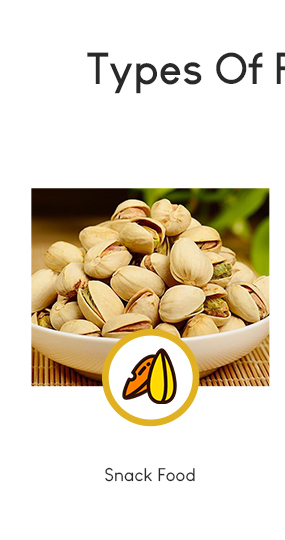 |
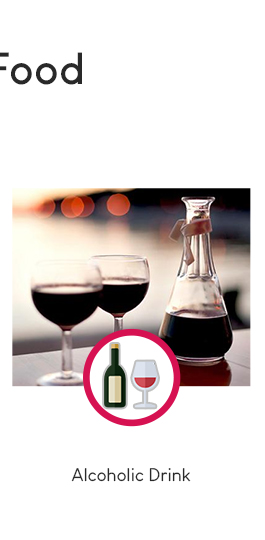 |
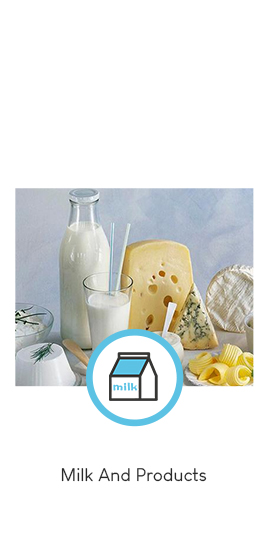 |
 |
||
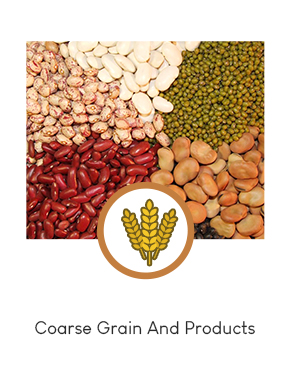 |
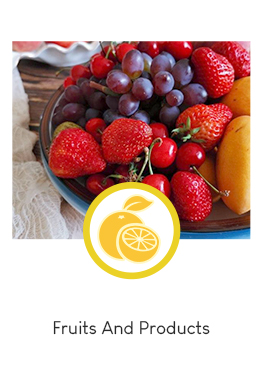 |
 |
 |
||
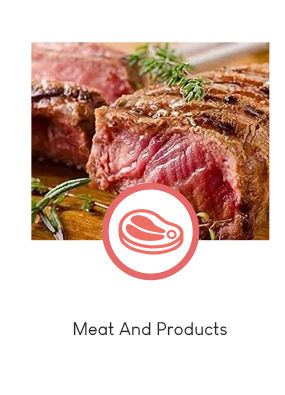 |
 |
 |
 |
||
 |
 |
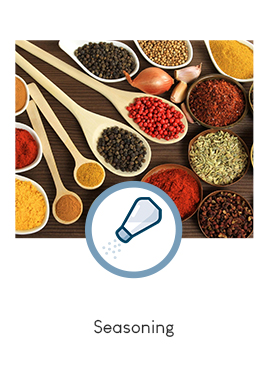 |
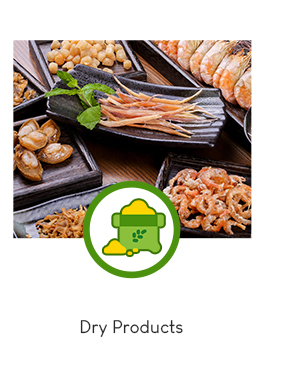 |
||
 |
|||||






